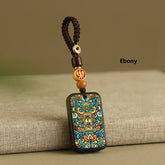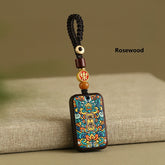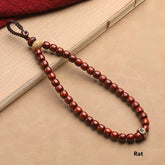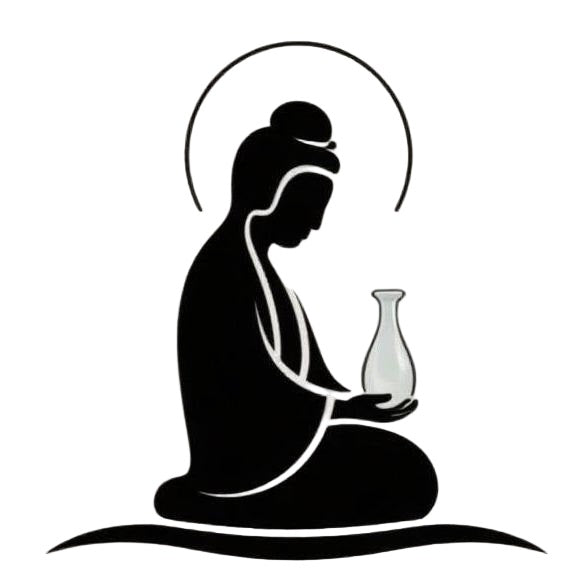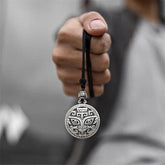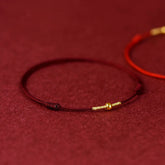Buddhist Symbols: Sacred Meanings & Feng Shui Applications
Buddhist Symbols: Sacred Meanings & Feng Shui Applications
The rich tapestry of Buddhist symbols forms an essential language of enlightenment, conveying profound spiritual truths through visual imagery. These ancient Dharma symbols serve as powerful reminders of the Buddha's teachings, helping practitioners navigate the path toward awakening. From the ubiquitous Lotus flower to the sacred Dharma Wheel, each element in Buddhist iconography carries multiple layers of meaning, developed over 2,500 years across diverse cultures from India to Japan. Understanding these sacred symbols provides not only insight into Buddhist philosophy but also practical tools for enhancing spiritual practice and creating harmonious environments through Feng Shui principles.
This comprehensive guide explores the most significant Buddhist symbols, their historical origins, spiritual significance, and contemporary applications. Whether you're new to Buddhist practice or seeking to deepen your understanding of these powerful icons, you'll discover how to incorporate their wisdom into daily life. We'll examine how these timeless Buddhist teachings in visual form can transform living spaces, support meditation practice, and serve as constant reminders of our innate Buddha nature.
The Foundation of Buddhist Symbolism
The Purpose of Sacred Imagery
In Buddhist traditions, sacred symbols function as much more than decorative elements. They serve as:
-
Visual representations of complex philosophical concepts
-
Meditation supports that focus the mind
-
Teaching tools that transcend language barriers
-
Energetic anchors that create sacred space
The historical Buddha himself recognized the power of symbols, using everyday objects and natural phenomena to illustrate profound truths. This pedagogical approach evolved into the sophisticated system of Buddhist iconography we encounter today.
The Eight Auspicious Symbols (Ashtamangala)
Among the most important groupings in Buddhist tradition are the Eight Auspicious Symbols, known collectively as the Ashtamangala. These eight Buddhist symbols appear throughout Buddhist art, ritual objects, and temple architecture across all major schools. According to the Princeton Dictionary of Buddhism, these symbols originally represented offerings to the Buddha after his enlightenment and have maintained their significance for centuries.
Core Buddhist Symbols and Their Meanings
The Lotus Flower (Padma)
The Lotus stands as perhaps the most recognizable of all Buddhist symbols, representing purity, enlightenment, and spontaneous generation. Growing from muddy waters yet emerging unstained, the Lotus perfectly embodies the Buddhist ideal of living in the world without being corrupted by it.
The Lotus carries multiple nuanced meanings:
-
Purity of Body, Speech, and Mind: The flower, stem, and seed pod represent the three aspects of spiritual development
-
Progressive Enlightenment: Different stages of blooming symbolize various stages on the path
-
Non-Attachment: The Lotus rests on water without becoming waterlogged
In meditation practice, visualizing a Lotus at the heart center helps awaken compassion, while in Feng Shui, Lotus imagery purifies environmental energy.
The Dharma Wheel (Dharmachakra)
The Dharma Wheel symbolizes the Buddha's teachings and the path to enlightenment. Its eight spokes represent the Noble Eightfold Path, while the three turning parts correspond to the Three Jewels of Buddha, Dharma, and Sangha.
The Wheel's components reveal deeper Buddhist teachings:
-
The Hub: Represents moral discipline
-
The Spokes: Signify wisdom and the abandonment of ignorance
-
The Rim: Embodies mindfulness and concentration
Placing a Dharma Wheel in study areas or meditation spaces helps reinforce commitment to spiritual practice and understanding of Buddhist symbols.
The Endless Knot (Shrivatsa)
This intricately interwoven design represents the interconnectedness of all phenomena and the endless cycle of cause and effect (karma). The Endless Knot illustrates the non-dual nature of reality and the wisdom of dependent origination.
Contemporary interpretations highlight its relevance:
-
Interconnectedness: Reflects modern scientific understanding of ecological and quantum systems
-
Complexity of Mind: Represents the intricate workings of consciousness
-
Continuous Practice: Symbolizes the unbroken lineage of teaching
Displaying the Endless Knot in homes or workplaces serves as a reminder of our connection to all beings and the ethical implications of our actions.
The Victory Banner (Dhvaja)
Originally representing military triumph in ancient India, the Victory Banner was adopted as a Buddhist symbol of the Buddha's victory over ignorance and the four maras (obstacles to enlightenment). It signifies the triumph of wisdom over ignorance and the spread of Buddhist teachings throughout the world.
The Banner's spiritual meanings include:
-
Overcoming Obstacles: Inspiration for personal challenges
-
Preservation of Teachings: Commitment to maintaining Dharma
-
Academic Success: Particularly valued in educational pursuits
Positioning a Victory Banner in the career or knowledge area of your home according to Feng Shui principles supports overcoming professional and personal challenges.
Buddhist Symbols in Meditation Practice
Visualizations with Sacred Imagery
Many Buddhist meditation practices incorporate Buddhist symbols as focal points for concentration and contemplation. These visualizations help internalize the qualities these symbols represent:
-
Lotus Meditation: Visualize a Lotus blooming at the heart, radiating compassion
-
Dharma Wheel Contemplation: Reflect on the Eightfold Path while gazing at the Wheel
-
Endless Knot Visualization: Meditate on interconnectedness while tracing the knot's pattern
Regular practice with these sacred symbols gradually transforms their external forms into internalized realizations.
Creating a Meditation Space with Buddhist Iconography
Designing a meditation area with intentional Buddhist symbols enhances practice:
-
Primary Focus: Place a statue or image of the Buddha at eye level
-
Supporting Symbols: Arrange other significant symbols around the main image
-
Elemental Balance: Incorporate representations of all five elements
-
Personal Connection: Include symbols that particularly resonate with your practice
This sacred environment supports consistent practice and deepens connection to Buddhist teachings.
Feng Shui Applications of Buddhist Symbols
Enhancing Home Harmony with Sacred Symbols
Incorporating Buddhist symbols into home design according to Feng Shui principles creates environments supportive of spiritual growth:
-
Entryway: Place Lotus imagery or symbols to purify incoming energy
-
Living Room: Display the Eight Auspicious Symbols to bless family interactions
-
Study Area: Position a Dharma Wheel to support learning and contemplation
-
Bedroom: Use gentle symbols like the Lotus for peaceful sleep
The strategic placement of these Buddhist symbols transforms ordinary spaces into supportive environments for practice.
Balancing Energy with Mandalas
Mandalas—intricate geometric designs representing the universe—serve as powerful tools for environmental harmony:
-
Five Element Balance: Mandalas often incorporate all five elements
-
Spatial Harmony: Their symmetrical structure creates energetic balance
-
Meditative Focus: Serve as points for collective family meditation
Hanging mandalas in central home areas promotes overall environmental balance and serves as a visual reminder of the order underlying apparent chaos.
Buddhist Symbols in Daily Life
Jewelry and Personal Items
Wearing Buddhist symbols as jewelry or carrying them as personal items maintains constant connection with their meanings:
-
Mala Beads: Used for mantra repetition and mindfulness practice
-
Enso Pendants: Represent the infinite nature of mind and perfect imperfection
-
Small Statues: Portable Buddha images for travel meditation
These personal items transform everyday activities into opportunities for mindfulness and connection to Buddhist teachings.
Integrating Symbols into Routine Activities
Simple practices help integrate the wisdom of Buddhist symbols into daily life:
-
Mindful Eating: Visualize a Lotus during meals to practice non-attachment
-
Commutting: Reflect on the Endless Knot during travel to contemplate interconnectedness
-
Work Challenges: Remember the Victory Banner when facing difficulties
These integrations make profound teachings accessible throughout the day.
The Historical Development of Buddhist Iconography
Evolution Across Cultures
As Buddhism spread from India throughout Asia, Buddhist iconography adapted to local cultures while maintaining core meanings:
-
Tibetan Buddhism: Developed sophisticated tantric symbolism
-
Zen Buddhism: Embraced minimalist expressions like the Enso circle
-
Theravada Buddhism: Maintained early Buddhist symbols with historical accuracy
This cultural adaptation demonstrates the flexibility of Buddhist symbols to communicate universal truths through diverse forms.
Academic Perspectives on Buddhist Symbolism
According to the Oxford Handbook of Buddhist Practice, scholarly understanding of Buddhist symbols has evolved significantly in recent decades. Contemporary research emphasizes the lived experience of practitioners interacting with these symbols, moving beyond purely textual analysis to include anthropological and psychological perspectives.
Contemporary Relevance of Ancient Symbols
Buddhist Symbols in Modern Psychology
Modern psychology has recognized the therapeutic value of many Buddhist symbols:
-
Mandala Therapy: Used in art therapy for self-expression and integration
-
Lotus Visualization: Employed in trauma recovery for resilience narratives
-
Wheel of Life: Adapted for understanding behavioral patterns
This intersection demonstrates the continuing relevance of these ancient sacred symbols for addressing contemporary challenges.
Environmental Applications of Buddhist Principles
The ecological implications of Buddhist symbols like the Endless Knot have gained new significance:
-
Interconnectedness: Supports ecological awareness and responsibility
-
Non-Harming: Informs sustainable lifestyle choices
-
Compassion: Extends to environmental activism and animal welfare
This application shows how ancient wisdom addresses modern global challenges.
Conclusion: Living with Buddhist Symbols
The profound world of Buddhist symbols offers timeless wisdom for navigating the complexities of modern life. These sacred symbols serve as bridges between ordinary experience and enlightened understanding, supporting spiritual development through their layered meanings and aesthetic power. By understanding their historical context, spiritual significance, and practical applications, we can integrate their wisdom into daily practice and living environments.
At Fengshui&Buddha, we honor this rich symbolic tradition through carefully selected items that embody these powerful Buddhist teachings. Each piece serves as both beautiful object and meaningful support for your spiritual journey, helping create environments where wisdom and compassion naturally flourish. May these sacred symbols illuminate your path as they have for countless practitioners throughout centuries.



